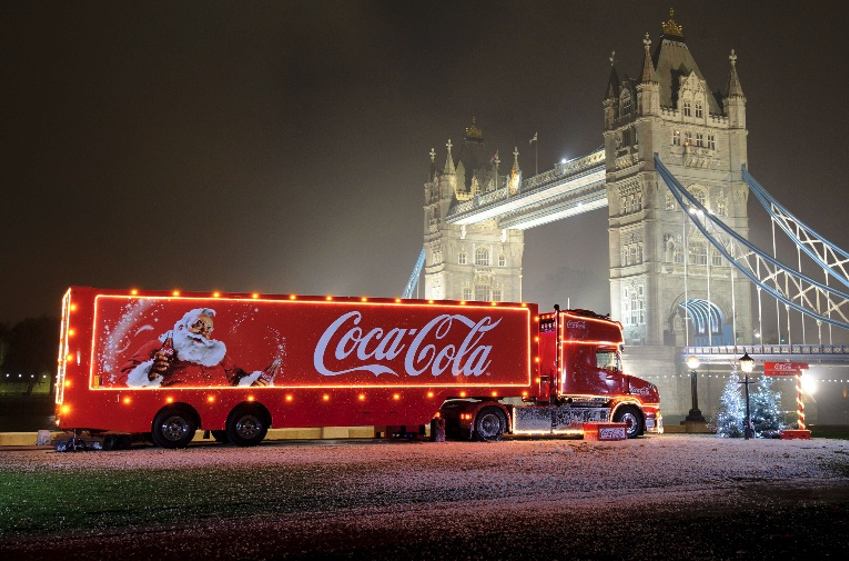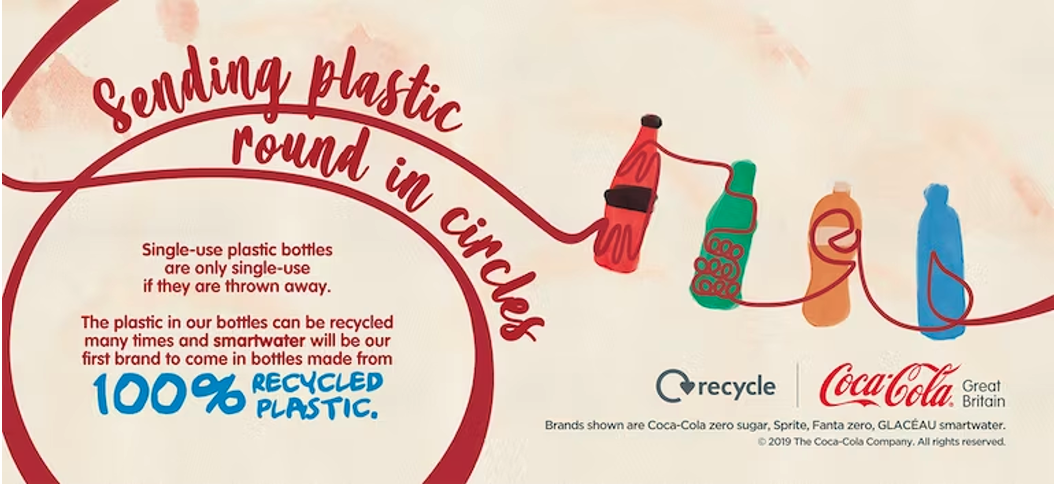When we hear these 6 words, we know that the holidays have well and truly begun. Arguably one of the most recognisable songs in the UK, since its first television appearance in 1995, the Coca-Cola ‘Holidays are coming’ song, along with the legendary Christmas truck, has been marking the start of the holidays and igniting excitement across the globe for millions of people.
We have come to love the iconic representation of Santa, with his Coca-Cola bottle. However, contrary to popular belief / myth, Santa did not turn red to match Coca-Cola branding although there is no denying Coca-Cola really do own the colour red!
Each year, the Coca-Cola truck visits more than 40 locations up and down the UK, spreading festive joy and handing out cans of Coca-Cola, with some queueing up all day just to bag one from the famous red truck!

In 2013, two million people visited the Coca-Cola website to find out where the truck would be stopping, the truck’s appearance got so popular in 2015, Coca Cola had to send out a second truck just so they could visit all the cities. In the same year, the hashtag #HolidaysAreComing was tweeted more than 57 million times……. WOW! Even now many years later, the Coca-Cola truck is still going strong. Since 2021 the Coca-Cola truck has been fully electric and in 2022 Coca-Cola pledged that ‘for every person that attended, Coca-Cola Great Britain would donate the equivalent of up to 100,000 meals to those in need throughout the festive season.’[1]
It’s hard to imagine a Christmas without the Coca-Cola truck, I’d even go as far as to say it’s hard to imagine a world without Coca-Cola in it. The iconic brand seems to be everywhere, from television adverts to billboards, magazines, and in our homes. Coca-Cola is the beverage that everyone seems to gravitate towards, with more than 2.1 billion servings of the iconic drinks being enjoyed in more than 200 countries and territories each day.[2]
Aside from the taste, the perfect glass bottle and of course Coca-Cola’s infamous marketing campaigns, what is it that makes Coca-Cola so special? Is it the care and sense of responsibility for our planet?
In many ways, Coca-Cola is pioneering with its purpose to ‘refresh the world and make a difference’ and their sustainability journey undoubtably reflects that in everything they do.
In 2018, Coca-Cola launched an ambitious strategy called ‘World Without Waste’ to drive systemic change through a circular economy for its packaging. The Brand Giant has committed to making 100% of its packaging recyclable globally by 2025 and using at least 50% recycled material in its packaging by 2030.

In recent years Coca-Cola have faced criticism about the sheer volume of ‘single-use plastic’ they put in the market. There is no hiding from the fact that 2.1 billion servings equals a lot of glass, aluminium and plastic packaging. In 2019 they launched a campaign in the UK to promote recycling and rightly pointed out that single-use is only single-use if it’s not recycled.
One of its packaging design goals is to reduce its use of virgin plastic derived from non-renewable sources by a cumulative 3 million metric tons between 2020-2025. In 2022 Coca-Cola announced a new global reusable packaging goal, by 2023 it aims to have at least 25% of its beverages sold by volume worldwide in refillable / returnable glass or plastic bottles, or in fountain dispensers with reusable packaging.
These are ambitious targets, and Coca-Cola are by no means all talk and no action. Reporting transparently on their sustainability progress annually, Coca-Cola has achieved 90% of their recyclability goal by 2025, referenced above, and are 25% of the way to achieving its recycled content target by 2030.[3] Packaging accounts for approximately 30% of the brand’s carbon footprint, which is why nearly all its World Without Waste efforts align with its 2030 science-based climate target and net zero ambition.
“When we lightweight our packaging, incorporate more recycled and bio-based material, invest in local recycling programs and increase our use of reusable packaging, we can reduce both waste and our greenhouse gas (GHG) emissions.”[4]
It’s refreshing to see that arguably one of the world’s most recognised and iconic brands doesn’t shy away from using their scale to address global challenges and create a force for good.
Traditionally, Coca-Cola has been recognised for its association with Christmas but actually there is much more to the iconic brand than just great marketing. I am the biggest kid when it comes to Christmas and I believe in Christmas magic and Santa Claus… but I also believe we all have to do our bit and take responsibility for the impact we have on our planet. Coca-Cola will always be ‘Holidays are Coming’ but they are also staying relevant in todays’ world and that should be applauded. There are not that many truly global brands that have pioneered for nearly 100 years, so a big well done Coca-Cola!
Merry Christmas everyone! – Gillian Garside-Wight
[1] https://www.coca-cola.com/gb/en/social/coca-cola-christmas-in-great-britain-/coca-cola-christmas-truck-tour-2022—where-and-when-to-find-us
[2]https://www.coca-colacompany.com/about-us/history
[3]https://www.coca-colacompany.com/content/dam/company/us/en/reports/coca-cola-business-sustainability-report-2022.pdf#page=36
[4] https://www.coca-colahellenic.com/en/a-more-sustainable-future/mission-2025/world-without-waste
